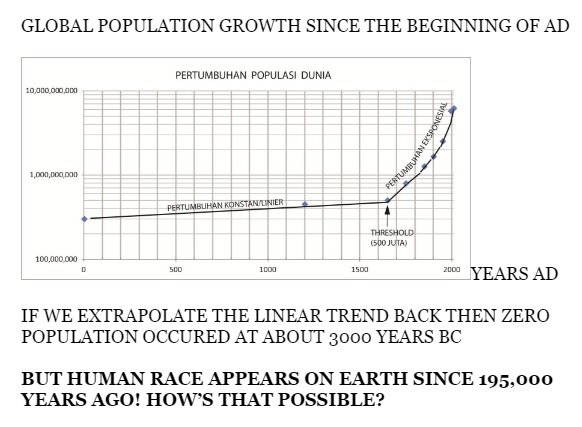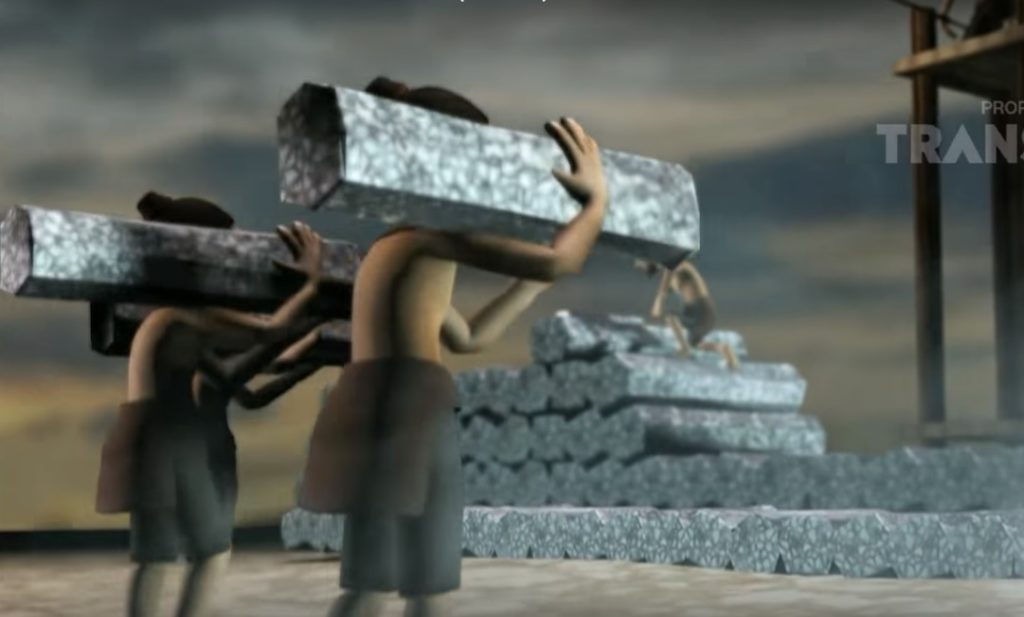Dear Danny,
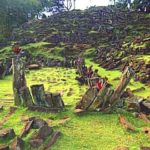 This is my penultimate post about Gunung Padang, unless and until you formally publish your results, or dramatic new information emerges. I’m going to start by mopping up a few leftover details and niggles from the work on the site, and from your responses; and I’ll finish next time by addressing issues that only became apparent to me as I dug into the activities of your Tim Katastropik Purba and its connections with a private research group called Turangga Seta.
This is my penultimate post about Gunung Padang, unless and until you formally publish your results, or dramatic new information emerges. I’m going to start by mopping up a few leftover details and niggles from the work on the site, and from your responses; and I’ll finish next time by addressing issues that only became apparent to me as I dug into the activities of your Tim Katastropik Purba and its connections with a private research group called Turangga Seta.
The “River Rocks” and the Artificial Embankment
According to your chronology, the summit was renovated about 3000 years ago (or maybe 7000, or maybe even earlier), when a retaining wall was built and backfilled on the south end of the terraces, where no columnar andesite is found. Both the earth and the stones were brought up, you say, from the river. You explain it most explicitly on video to Andrew Collins (see 22:47 onwards): all the soil at that end has been carried up from elsewhere, all the rocks are round from being in the river; and—most critically—because they are different from the columnar rocks on the other faces of Gunung Padang, they can only have been brought to their present location by humans, and are further evidence that G. Padang is an artificial construction.
As far as I could find, no pictures of these rounded “river rocks” have been published—but screen caps from Mr. Collins’ video give a very good idea of what they look like. And what they look like to me is not river rocks, but volcanic bombs. That’s what they looked like to my friendly neighbourhood geologist, as well, and I would be interested in hearing what other geologists reading this might have to say. If they are volcanic bombs, they are the sort of thing you’d fully expect to find buried in volcanic deposits, with no need to suggest human agency. And it would make a nonsense of the image of labourers toiling up from the river with loads of earth to remodel the summit, and particular nonsense of the C14 dates collected from the “backfill.”
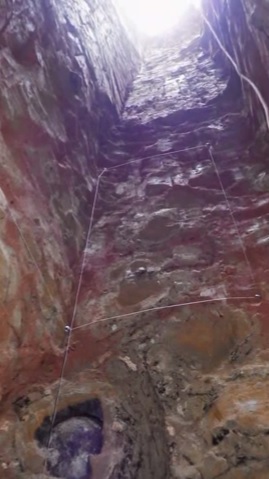 Speaking of the “backfill,” I gather it is the level in the 10m-deep sondage described as homogeneous and unstratified, which is a major reason why you consider it to be artificial. I could not get a good look at the level—the closest I could get was screencaps from two videos (here and here) taken from the bottom of the sondage, showing a dense reddish matrix larded with lots of those rounded stones. What it does not look like, however, is artificial backfill. In fact, the kind of deposit you suggest would be anything but homogeneous. Any artificial secondary deposits I’ve seen or excavated have been somewhat heterogeneous, often with lenses, tip lines and even individual baskets-full of earth visible in the profiles. Fluvial sediments would likely be abundant in shells, vegetable matter, and the bones of both fish and mammals, which you do not mention finding. To sum up, the “homogeneous level” looks less like an artificial embankment than a thick natural deposit of soils derived from volcanic materials – ash and tephra—with embedded volcanic bombs.
Speaking of the “backfill,” I gather it is the level in the 10m-deep sondage described as homogeneous and unstratified, which is a major reason why you consider it to be artificial. I could not get a good look at the level—the closest I could get was screencaps from two videos (here and here) taken from the bottom of the sondage, showing a dense reddish matrix larded with lots of those rounded stones. What it does not look like, however, is artificial backfill. In fact, the kind of deposit you suggest would be anything but homogeneous. Any artificial secondary deposits I’ve seen or excavated have been somewhat heterogeneous, often with lenses, tip lines and even individual baskets-full of earth visible in the profiles. Fluvial sediments would likely be abundant in shells, vegetable matter, and the bones of both fish and mammals, which you do not mention finding. To sum up, the “homogeneous level” looks less like an artificial embankment than a thick natural deposit of soils derived from volcanic materials – ash and tephra—with embedded volcanic bombs.
I notice also that, throughout your stratigraphic analysis, you do not weigh in a factor pointed out by, for example, Sutikno Bronto: that some of the features you interpret as successive building levels could be accounted for by the disturbances from periodic earthquakes and landslides.
The Rolling Stone
This item, found near the bottom of the 10m sondage and visible in situ in the photograph above, gave rise to great excitement when it was discovered: a spherical stone shell enclosing a spherical stone, which could roll in its casing like the ball in an old computer mouse. It became the focus of a lot of stories. For example:
After analyzing the strange Rolling Stone, researchers decided to roll the stone 7 times to the right and 7 times to the left, at the advice of ‘community leaders.’ To their surprise, the Rolling Stone functioned as a key, giving way to yet another passageway. …
Still mystified by the stone, the team decided that it merited further studies. With the help of the military, who assisted in the excavation, the Rolling Stone was brought to the surface of Gunung Padang for inspection. And, that’s when another strange thing happened. / Upon bringing it to the surface, something astonishing unfolded before their eyes. When discovered, the Rolling Stone was black in color, and measured roughly 11-12 centimeters in diameter. Within a matter of just a few minutes, the stone changed into a greyish color and expanded to over 3 times its original size.
Are those serious claims? When I look at the pictures of the Rolling Stone, oddly enough, I see just another 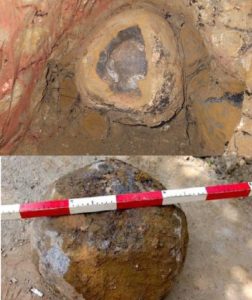 natural volcanic feature. Which is what other Indonesian geologists viewing it have also said. Again, I would be interested in the comments of any geologists reading this. I do not know what to make of the claim for the rock’s shape-shifting properties, though I find it about as credible as the story about rolling the inner stone seven times left and seven times right.
natural volcanic feature. Which is what other Indonesian geologists viewing it have also said. Again, I would be interested in the comments of any geologists reading this. I do not know what to make of the claim for the rock’s shape-shifting properties, though I find it about as credible as the story about rolling the inner stone seven times left and seven times right.
However, I found one of your comments on it on a Facebook thread very interesting. An elder Indonesian geologist posted a comment on his page regarding whether the “rolling stone” and the hill itself were natural or artificial, with him leaning towards “natural.” You riposted that the rolling stone is “not important” and then launched into a restatement of your interpretation of the stratigraphy. This is the same tactic you used when challenged on the coin—that it was “not important,” even though the colleagues on your own team based huge claims on it, which were picked up as fact by the pseuds and the media. And I notice a somewhat similar pattern with the next artifact under discussion.
The Electrical Device
I could find very little information about this much-touted discovery, nothing but breathless media speculation about the advanced technology it represents. A typical description:
Dr. Danny Hilman is responsible for the archaeological team conducting research on the site and they have recently announced a discovery of a oddly shaped metal device that is presumed to be the world’s oldest electrical device. According to researchers, this object is made out of gold and copper and seems to resemble a primitive electrical capacitator. According to some researchers, this newly found device seems very similar in structure to the biblical descriptions of the “The Ark of the Covenant“. Carbon dating confirms the device to be 2500 older than The Ark of the Covenant.
The only direct comment of yours that I could find was in a FB posting on Graham Hancock’s page, in response to his direct request for information. You said: “It seems to be a modification of an older article, and surely it is not right, I haven’t said such things.” Good for you for setting the record straight—but a pity that your disclaimer was not made more widely, and seems to have fallen on deaf ears. The “world’s oldest electrical technology” has taken on a life of its own in the growing legend of Gunung Padang.
Your Archaeological Synthesis
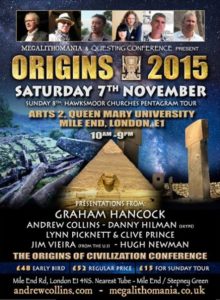 I’m not talking here about your “archaeological” interpretation of the site, but your strawman views of how mainstream archaeology approaches the past, and your alternative approach. In a nutshell, you appear naive about how archaeology works, in a way that strikingly matches the naiveté of “alternative scholars” like Graham Hancock, Andrew Collins, and Semir Osmanagic.
I’m not talking here about your “archaeological” interpretation of the site, but your strawman views of how mainstream archaeology approaches the past, and your alternative approach. In a nutshell, you appear naive about how archaeology works, in a way that strikingly matches the naiveté of “alternative scholars” like Graham Hancock, Andrew Collins, and Semir Osmanagic.
For example, take the opening slides of your powerpoint presentation, The Pre-Historic Cultures: Are They Primitive? Slide 3 shows a graph of global population estimates starting with the beginning of the Common Era (about 300,000,000), with the caption: “If we extend the linear trend back then zero population occured (sic) at 3000 years BC. But human race appears on Earth since 195,000 years ago! How’s that possible?” Which is the kind of absurd argument that I have previously only seen used by Young Earth Creationists, to prove mathematically that we all descended from the eight survivors of Noah’s flood.
Your point (I think) is that, in order to extrapolate linearly to zero population at 200,000 years ago, we’d need to posit an absurdly low rate of population growth—thus, you propose cyclical catastrophes that occasionally reset humanity to nearly zero. But your initial assumption—linear global population growth at a constant rate—is fallacious. And you do know about the other hominins, right? And how speciation necessarily involves an existing population? Essentially, you’re proposing a series of bottlenecks like the Toba Event, and hinting that each also destroyed “advanced civilizations”—fine, but where is the evidence?
The fact is that the model you reject is the model amply supported by the archaeological evidence: a couple million years of hominins living the wandering, foraging life with low-tech but effective technology; the emergence of archaic and AM humans, accompanied by a stunning florescence of lithic and other technologies, still in mobile foraging mode; and the beginnings of sedentation as early as the Epipaleolithic in some places, with markers of increasing social complexity and a preadaptation to food production.
To me, it sounds like you cannot accept that anatomically modern humans with brainpower identical to ours would go for so long without inventing civilization. Is that your position? If so, it is not just naive about the nature and process of civilization—it is an absurd value judgment.
Next and last: the Sunda Agenda.


